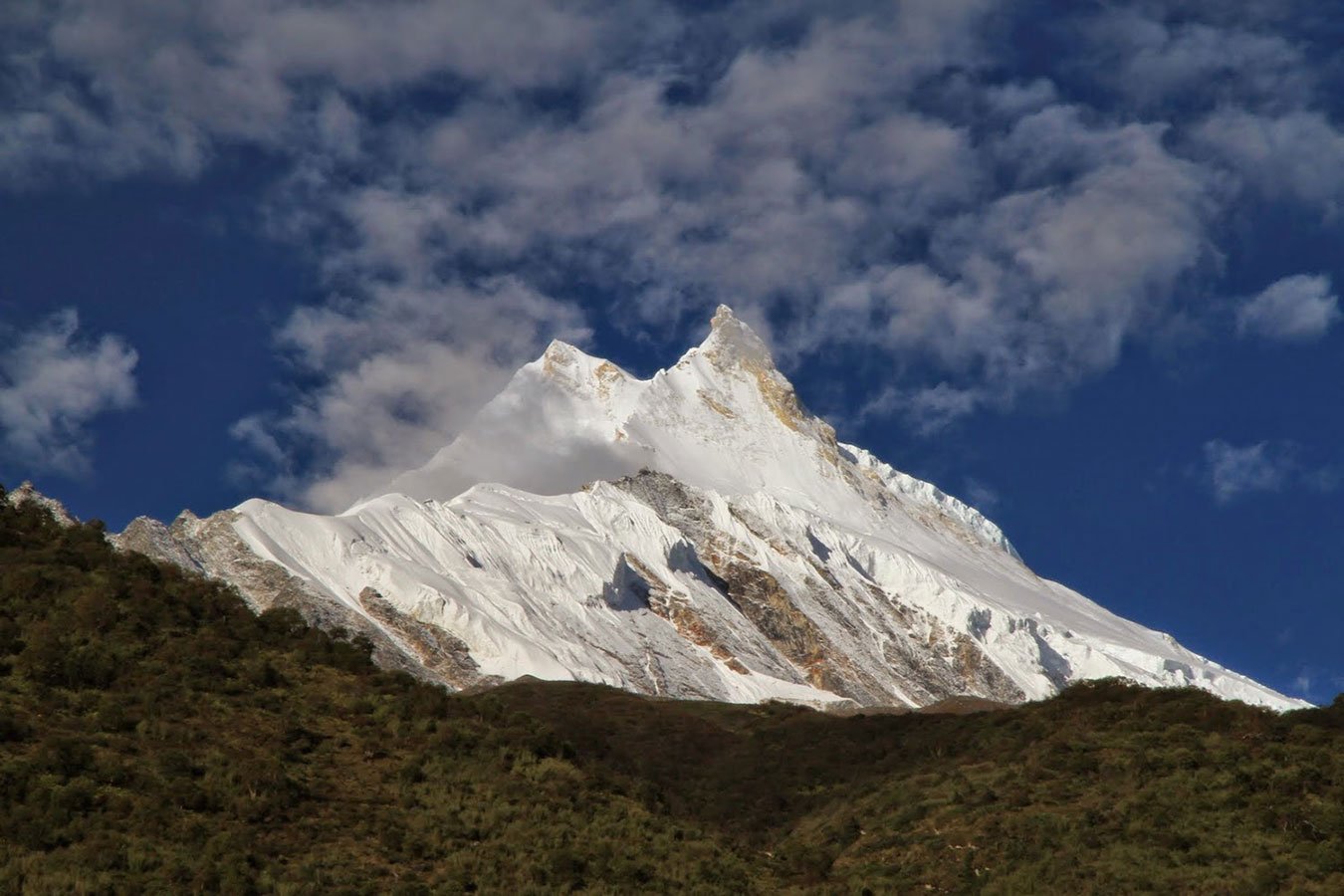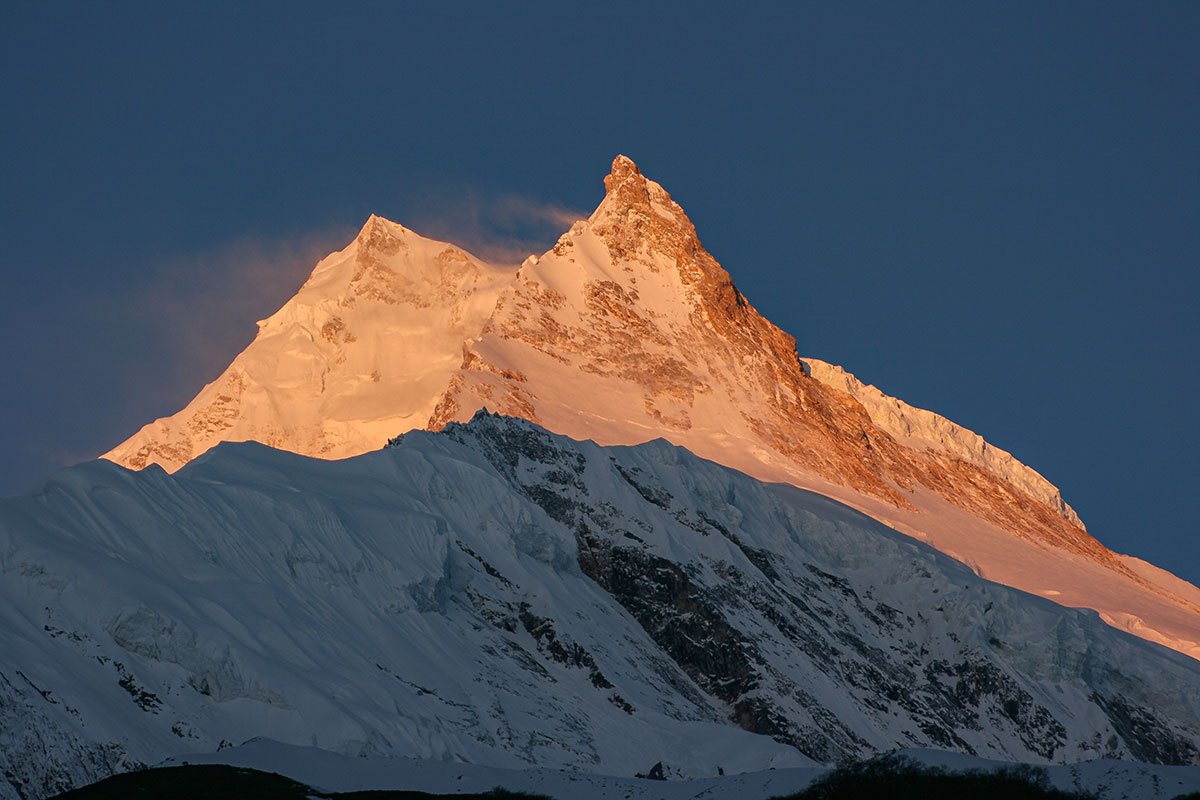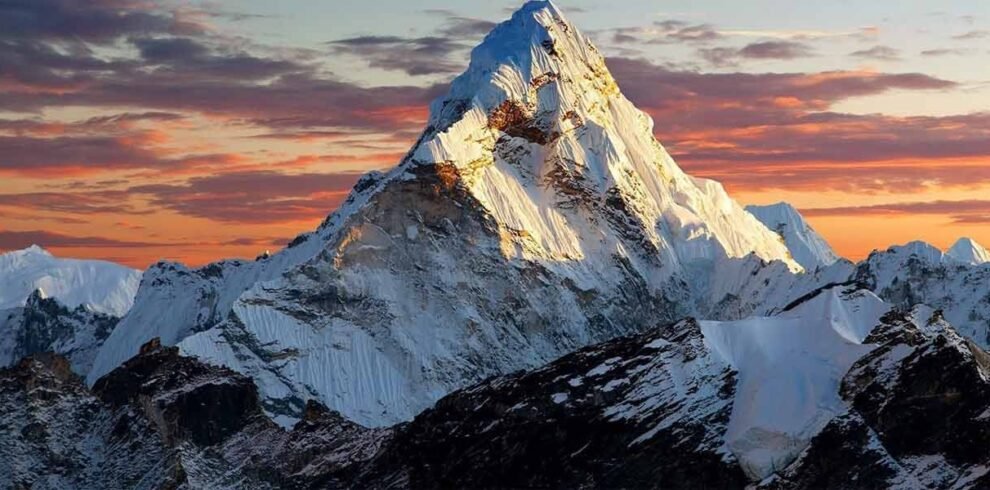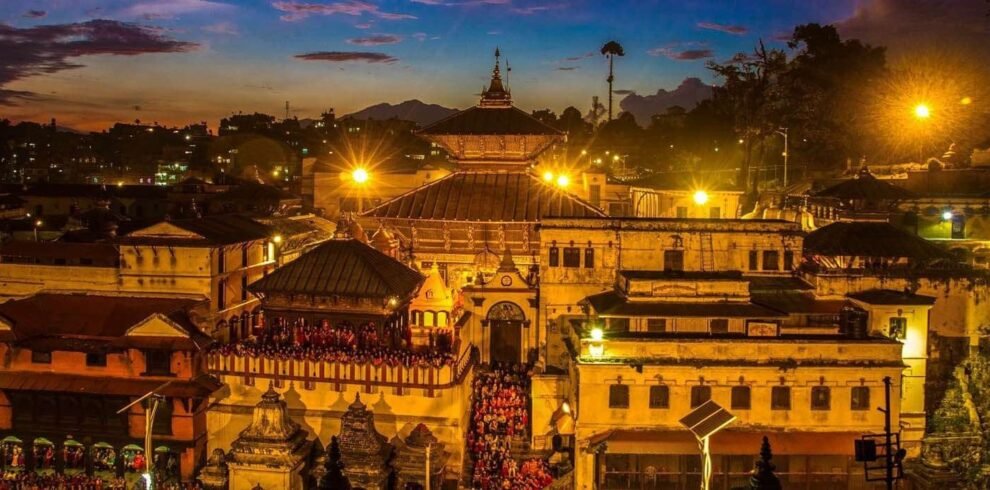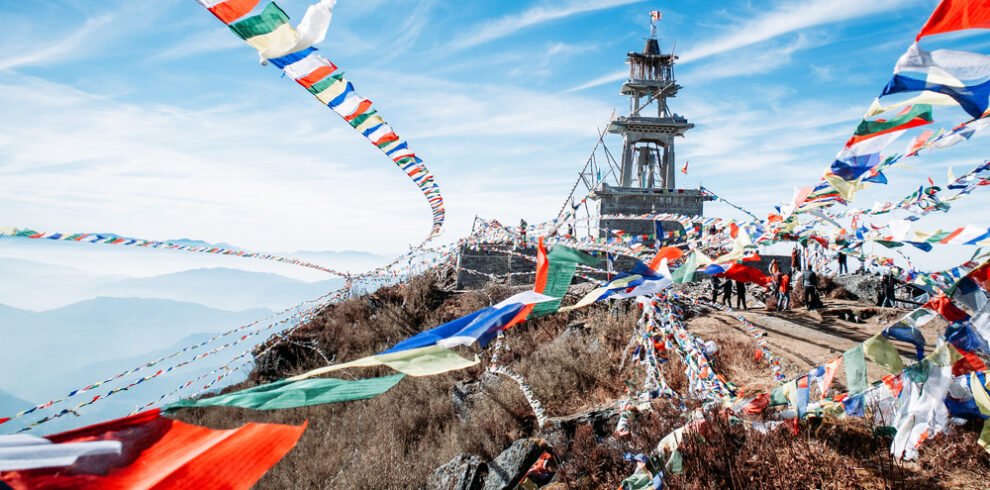The Manaslu Circuit Trek is a challenging and rewarding Himalayan adventure that takes you through remote villages, stunning landscapes, and Tibetan-influenced cultures. With majestic views of Mount Manaslu (8,163m) and the thrilling crossing of Larkya La Pass (5,160m), this trek offers both physical challenge and cultural richness. Best done from March to May or September to December, it’s perfect for those seeking solitude and raw natural beauty off the beaten path.
Trip Info
-
Hotel/Lodge/Tea House during the trek
-
Mar, Apri, May, Sep, Oct & Nov.
-
5153m
-
Fly/Car/Jeep/ Bus
-
5/6 hours
Overview
One of the most exhilarating moments of the trek is crossing the formidable Larkya La Pass at 5,160 meters. This dramatic crossing offers unmatched panoramic views and a rare chance to witness the meeting point of diverse landscapes and cultures.
Trip Highlights
- The jaw-dropping natural beauty of the forests, rivers, and flora in the Manaslu region.
- Friendly people, and rich culture of the region, which includes both Nepalese & Tibetan ethnic groups.
- Larkya La Pass (5,167 m ), the highest point on the trek.
- Stunning view of some of the highest peaks in the world- Mt. Manaslu (8,163m), Himlung Himal, Annapurna II, and more Abundant wildlife, including Tahr, Agali, Pika, Himalayan Marmots, and if lucky, Snow Leopard.
- Immerse yourself in the rich culture of Sama Gaon and Samdo, experiencing the unique blend of Nepalese and Tibetan ethnic groups.
Itinerary
Upon arrival at Tribhuvan International Airport in Kathmandu, you will be warmly welcomed by our representative. After completing airport formalities, you’ll be transferred to your hotel in the heart of the city. Once checked in, take some time to rest and refresh from your journey. Depending on your arrival time, you can explore the bustling streets of Thamel, enjoy local cuisine, or simply relax. In the evening, there will be a short briefing about the trek and time to prepare for the adventure ahead.
After an early breakfast, your journey begins with a long scenic drive from Kathmandu to Machha Khola. The route follows winding mountain roads, offering views of terraced fields, lush hillsides, and rural Nepali villages. You’ll pass through Dhading and Arughat, gradually moving into more remote terrain along the Budhi Gandaki River. Although the drive is long and occasionally bumpy, the dramatic landscapes and glimpses of daily life in the countryside make it an interesting and rewarding experience. Upon reaching Machha Khola, a small riverside village, you’ll check into a teahouse and rest for the night.
Today’s trek follows the trail along the Budhi Gandaki River through narrow gorges, lush forests, and traditional settlements. You’ll cross several suspension bridges and walk through the village of Khorlabesi before reaching the natural hot springs at Tatopani, a great place to take a short break. The trail continues through steep sections and landslide-prone areas, requiring careful footing. After crossing a few more bridges and climbing stone staircases, you’ll arrive at Jagat — a beautiful Gurung village with stone-paved streets and stunning views. Jagat also serves as the official entry point to the Manaslu Conservation Area. You’ll stay overnight at a teahouse here.
The trail ascends through terraced fields, forests, and traditional villages like Philim and Ekle Bhatti. You’ll cross suspension bridges, walk through gorges, and enjoy scenic views of waterfalls and cliffs. As you reach Dyang, the Tibetan influence becomes more visible. Overnight at a teahouse in Dyang.
Today’s trek climbs steadily through forests of rhododendron and oak, passing traditional villages and terraced fields. You’ll cross several suspension bridges over fast-flowing rivers and enjoy spectacular mountain views as you approach Namrung. This vibrant village is known for its Tibetan-style houses and rich cultural heritage. Overnight stay at a teahouse in Namrung.
Today’s trail takes you higher through lush forests and alpine meadows. You’ll pass small villages and cross rivers while gradually gaining altitude. The landscape becomes more rugged, with stunning views of snow-capped peaks. Shyala, a quiet village surrounded by natural beauty, offers a peaceful place to rest overnight in a teahouse.
After breakfast, we will go to visit Pungyen Monastery after that we'll head to Samagaun. Pungyen Monastery represents the spiritual serenity and cultural richness of the Manaslu region. This sacred site offers devotees and travelers will have the occasion to perceive the hidden gems of the unique culture of Tibetan Buddhism. After visiting the holly place we head to Samagaun through the magnificent place with pine and juniper trees with sparking peaks. An overnight stay at the beautiful village at Samagaun.
An important rest or free day for good acclimatization before heading to high areas and to Larkya-La pass, on this free day explore the villages with a short hike around. Today we're going to hike to the world's 8th Base Camp of Manaslu. It takes 5 to 6 hours up and down including the Birendra lake as well. The Manaslu base camp lies at 4800 meters above sea level and it would be the best hike and meaningful hike throughout the trip. You will extremely soak into the hidden gems of nature and culture of the Manaslu region. The Manaslu base camp hike is quite thought in comparison to the Pungyen Gumpa. Before hiking to Manaslu Base Camp better to pack a lunch, fill enough water, and carry the necessary gear like a trekking pole, warm jacket, gloves, sunglass, and warm head.
A short day to Larkya Phedi as known Dharmasala (4600 m) after a nice stop at Samdo village, Before crossing an icy stream and then heading towards a drier barren area, the trek today is not that hard except for rapid altitude gain. A few hours gradually and down to complete the morning walk at Larkya Phedi, meaning the base of the hill or pass, the afternoon is free for leisure for a short hike. We suggest you ascend up at least two hundred when you reach at Dharmasala.
Starting early morning to reach at the top of the Larkya-La pass at 5,106 m. A strenuous and long climb overlooking the awesome scenery of surrounding hills and valleys with Mt. Manaslu, Larkya Peak, Bouddha Himal, Himalchuli, and of Peak 29. After a steep climb eventually, you'll be reaching the top of the Larkya La pass, festooned with Buddhist prayer flags and stunning views. Such an amazing time at theLarkya la we'll extremely descend to Bimthang village. The coming down would be slippery and tough so highly recommend bringing crampons and a trekking pole. An overnight stay in Bhimtang village with a majesty valley.
The trek starts from a drive from Kathmandu on Prithvi Highway that follows the Trishuli River. The views on the road are unlike anything you have ever seen -traditional villages, terraced fields, white water rivers, lush forests, giant mountains - including Annapurna, Manaslu, Langtang, and Ganesh Himal. We will continue our bus ride until we reach Soti Khola. Soti Khola is the gateway to the Manaslu trek. We will be spending our first night in the trek region at Soti Khola.
This will be the last day on the trails. After waking up at Gho, we head to Dharapani. The route descends so the trek should be easy. You will be trekking through many fields and pastures and arrive at Tilje - a large Gurung settlement. This village is famous for brandy. However, we continue forward passing several Mani walls to reach Thonje village and then enter Dharapani village.
Today will be your last day on the road. After early morning breakfast, we leave Dharapani to Besishar on a local bus, which will take about six to seven hours. The drive will be scenic as we will pass many villages, Marsyangdi River, Bhulbhule town, and Khudi. We will reach Besisahar before 3 pm to catch the last bus to Kathmandu. If we are late, we will have to extend a day in the itinerary.
After catching a bus to Kathmandu, on our way, you will see the Marsyagdi River meeting the Trishuli River, as we head east on the Prithivi Highway. The drive allows you to appreciate beautiful and natural scenery - including the terraced lands and high peaks.
After completing your unforgettable Manaslu Circuit Trek, you will be transferred to Tribhuvan International Airport in Kathmandu for your flight home. Take with you memories of stunning Himalayan landscapes, rich cultural experiences, and a sense of accomplishment from this incredible journey. Safe travels!
Includes/Excludes
Includes
- Airport pick-up and drop-off in Kathmandu
- Kathmandu to Machha Khola round-trip transport by private vehicle
- Manaslu Restricted Area Trekking Permit and Manaslu Conservation Area Permit
- TIMS (Trekkers’ Information Management System) card
- Teahouse/lodge accommodation during the trek (shared rooms)
- All meals (breakfast, lunch, and dinner) while trekking
Excludes
- Visa fees for Nepal entry
- Travel insurance including emergency evacuation coverage (mandatory)
- Meals and drinks in Kathmandu outside of included meals
- Tips for guide, porter, and driver
- Personal expenses such as laundry, phone calls, internet, snacks, and souvenirs
FAQs
The Manaslu Circuit is situated in the western Himalayan region of Nepal, near the border of Tibet. It encircles Mount Manaslu, the 8th highest peak in the world, offering trekkers an immersive experience of remote mountain landscapes and rich cultural heritage.
Spectacular views of Mount Manaslu (8,156m), Ganesh Himal, Annapurna II, and other peaks.
Crossing the challenging Larkya La Pass (5,160m), one of the longest passes in the Himalayas.
Passing through traditional Buddhist villages adorned with monasteries, mani walls, and prayer flags.
The chance to explore diverse landscapes, from terraced farmlands and dense rhododendron forests to alpine meadows and glacier moraine trails.
Is the Manaslu Circuit Trek suitable for all levels of trekkers?
The Manaslu Circuit Trek is considered moderately to highly challenging due to its long distances, high altitude, and rugged trails. However, you can complete this trek, if you are a normal fit and determined.
The Manaslu Circuit Trek stands out due to its relative remoteness and exclusivity. While it shares similarities with popular treks like the Annapurna Circuit, it offers a less crowded experience, allowing trekkers to connect more deeply with nature and local culture.

